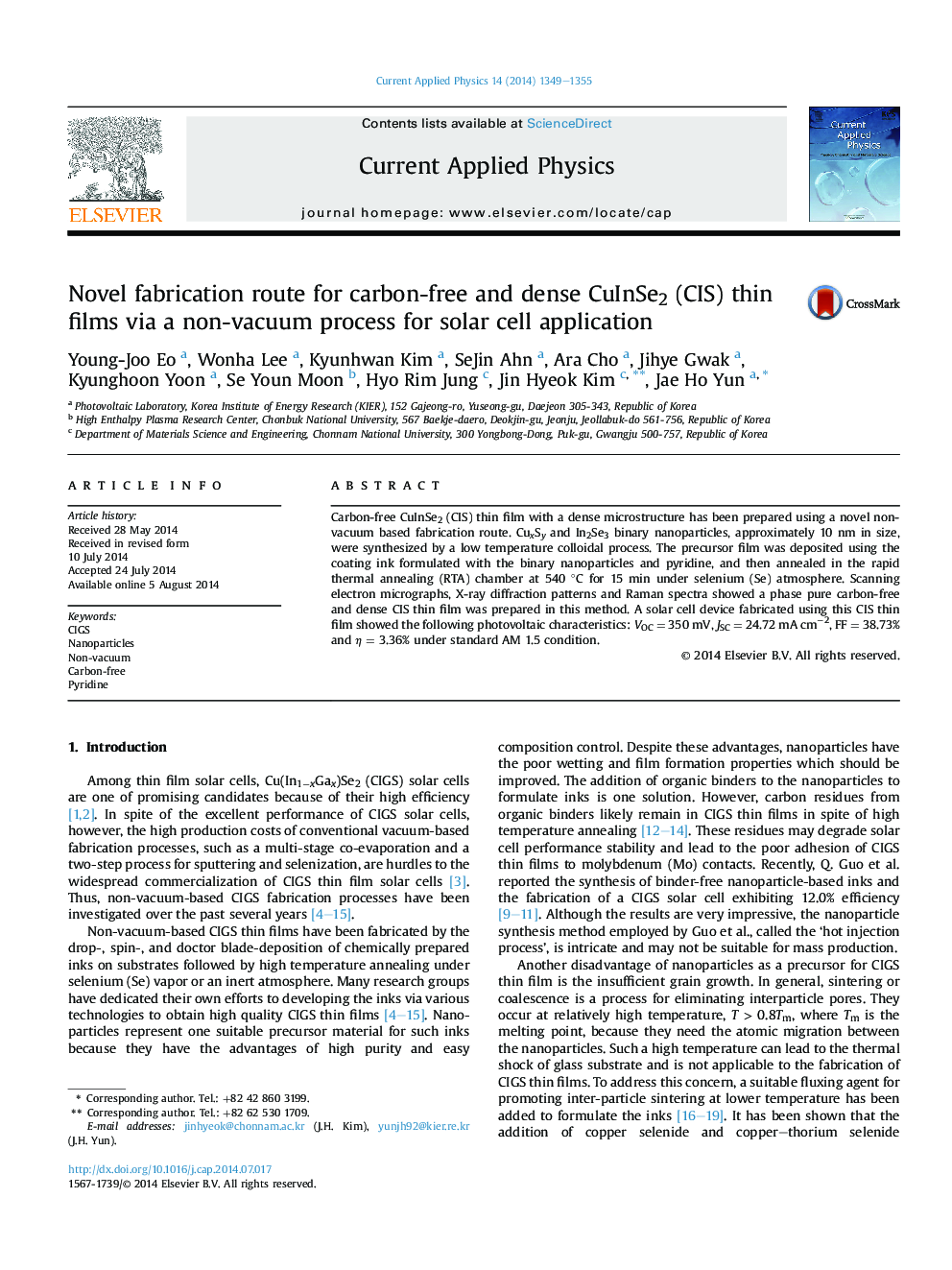| Article ID | Journal | Published Year | Pages | File Type |
|---|---|---|---|---|
| 1786019 | Current Applied Physics | 2014 | 7 Pages |
•Carbon-free CuInSe2 thin films are fabricated using nanoparticle-based ink.•Ink consists of CuxSy and In2Se3 binary nanoparticles, and pyridine as a solvent.•Surface modification of nanoparticles by pyridine enhances their miscibility.•Pyridine evaporated fully during simple drying process due to weak basic character.•CuxSy nanoparticles act as a fluxing agent for inter-particle sintering.
Carbon-free CuInSe2 (CIS) thin film with a dense microstructure has been prepared using a novel non-vacuum based fabrication route. CuxSy and In2Se3 binary nanoparticles, approximately 10 nm in size, were synthesized by a low temperature colloidal process. The precursor film was deposited using the coating ink formulated with the binary nanoparticles and pyridine, and then annealed in the rapid thermal annealing (RTA) chamber at 540 °C for 15 min under selenium (Se) atmosphere. Scanning electron micrographs, X-ray diffraction patterns and Raman spectra showed a phase pure carbon-free and dense CIS thin film was prepared in this method. A solar cell device fabricated using this CIS thin film showed the following photovoltaic characteristics: VOC = 350 mV, JSC = 24.72 mA cm−2, FF = 38.73% and η = 3.36% under standard AM 1.5 condition.
Graphical abstractSchematic diagram of CuInSe2 thin film fabrication route in this article.Figure optionsDownload full-size imageDownload as PowerPoint slide
